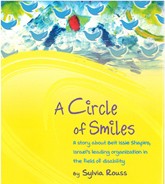The reader discovers in this sweet tale that the sun and the moon were created to reside in the sky and to light the world, but were not designed to be the same size or to cast the same glow. The moon, eager to be the brighter of the two, discusses the discrepancy with God and is told that she is to be the smaller and dimmer and will shine only at night. Disappointed at first, the moon begins to think about what serving God truly means and begins to see all the incredible blessings and joys possible in her very special role. With stars to accompany her, the power of the tides, the ability to wax and wane, a gentle light, a special connection to holidays and time, and other unique advantages, she understands that every one of God’s creations has its own essential part to play and each is important and irreplaceable.
With deep, rich, jewel-toned art which seems to cast a glow of its own accompanying the text of this empowering tale, the author and illustrator present a story which will help every child see that he or she has a vital place in the scheme of life, discouraging envy and encouraging confidence and high morale.
An activity which teaches phases of the moon is appended as is a note about the ancient text on which the story is based. Recommended for ages 3 – 7.
Michal Hoschander Malen is the editor of Jewish Book Council’s young adult and children’s book reviews. A former librarian, she has lectured on topics relating to literacy, run book clubs, and loves to read aloud to her grandchildren.





